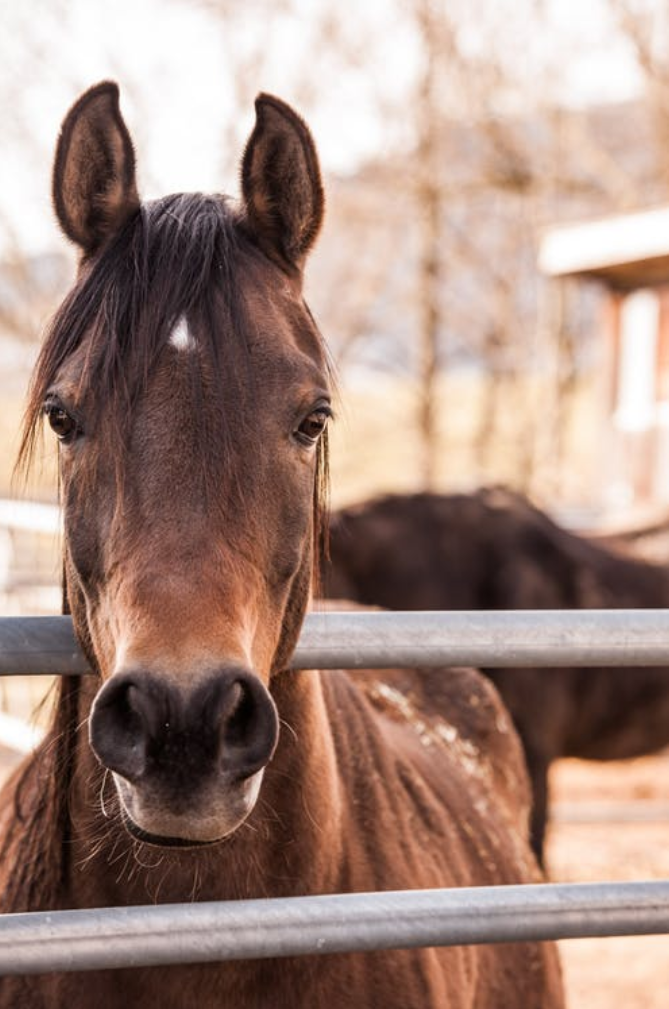Zoophilia describes the feelings of sexual arousal or sexual preference for non-human animals. Zoophilia and zoophiles are not to be confused with furries, who are fixated on anthropomorphic or cartoon animals and are rarely sexually motivated in this fixation.7 This form of sexual arousal is considered a paraphilia, or a condition characterized by atypical sexual desires. The actual act of engaging or allowing or recording sexual intercourse with animals is known as bestiality.9 Thus an individual can be a zoophile without engaging in bestiality such as through fantasizing or other sexual acts. Bestiality is generally considered non-consensual sex because animals are not capable of giving affirmative consent, which is necessary in all sexual situations. Sexual acts with animals can lead to various risks, mainly physical to both the animal and participant. Due to the information above, bestiality is considered a form of animal cruelty and is illegal in many parts of the world.

Table of Contents
Terminology
Zoophilia is defined as a paraphilia involving a sexual fixation on non-human animals. Bestiality is defined as cross-species sexual activity between human and non-human animals. The two terms are often used interchangeably; however, many argue that the distinction is important given that zoophila is defined by attraction whereas bestiality is defined by the act itself.13 ‘Zoophile’ is the term used to describe those with a sexual fetish toward animals, and these individuals can also as ‘zoosexuals’. ‘Zoosexual’ was introduced by Hani Miletski as a more value-neutral term than zoophile.5 ‘Zoosexuality’ is often the vernacular used by self-identified zoophiles in support groups and internet forums.3 Within the zoophila community, there is a further distinction between a ‘bestiosexual’, those who rape or abuse animals for their own pleasure and gratification, and zoophiles, who consider themselves to value the welfare and pleasure of the animal.15 The term ‘zoophilia’ was first coined by Krafft-Ebing in Psychopathia Sexualis (1886) to describe the violation of animals. The term is derived from the Greek words ‘zoion’, meaning animals, and ‘philia’, meaning love.14

Frequency
Sex with animals might not be as rare as one would think. A study done in the 1940s found that nearly 50% of boys raised on a farm in America experienced at least one sexual encounter with an animal, and 17% of those interactions led to orgasm. Within this study, zoophilia was significantly less prevalent among females, with only 3.6% of the subjects recalling zoophilic encounters.10 It is important to state that zoophilic disorders are only diagnosed if a sexual attraction or sexual relations with animals persists until after adolescence. This is a standard requirement in the DSM-V for diagnosing paraphilic disorders.6 The statistics presented above are prone to error, given the lack of research and surveying into bestiality. This lack of data can be attributed to the stigmatized nature of zoophilia in addition to a lack of laws that require entities such as animal control agencies, veterinarians, and law enforcement to report statistics on criminal acts involving animals.

Reasons for Engaging in Bestiality
Individuals may engage in bestiality because they have difficulty forming healthy sexual relationships with humans. Many of those who engage in bestiality lose, or never had, a desire to have sex with humans. Alternatively, the animal may be used like a sex toy because it provides sensations similar to human sexual stimulation. In this instance, the animal is not viewed as a loving partner but as an object that can be used for sexual gratification.3

However, zoophiles experience genuine feelings of affection toward animals that are symptomatic of interpersonal sexuality. For example, one study using penile plethysmography found that one man experienced his strongest sexual arousing while viewing images of horses. For this study, researchers attached a special device to the man’s penis which allowed them to track the volume of blood in his penis. Then they showed him a series of images and used the blood volume data to evaluate his degree of physiological arousal in response to each image. His arousal for images of horses was even stronger than it was for humans. Another zoosexual stated in a first-person account that feelings of romantic intimacy, not just physical pleasure, were an important part of his zoophilia.10
In many cases, bestiality is not a complete representation of one’s sexual activity and is usually a phase or isolated incident experienced as an adolescent. These encounters can typically be explained by curiosity or inexperience. Distinct from zoophilia and bestiality is faunoiphilia, a paraphilia which is described as feelings of sexual arousal when viewing animals mating. According to research, faunoiphilia is believed to be an indicator of latent zoophilia and voyeuristic zoophilia.2 Sexual fantasies regarding zoophilic behavior can occur in people who have no desire to experience these fantasies in real life. Fantasizing about a sexual experience with animals is not always a direct indicator of zoophilia, as the fantasy itself may merely be an escape from cultural expectations, restrictions, judgements about sex, or an attempt at adding novelty into one’s sexual fantasies. In fact, several studies found that people with vaginas show stronger vaginal responses to videos showing bonobos mating than to non-sexual stimuli.5

Classifying Zoophilia
Zoophilia is difficult to classify in relation to other paraphilias because there is little research available. There are several reasons for this lack of research. To begin with, the relative rarity of zoophiles and the social stigmatization surrounding them make it difficult for researchers to find willing participants for their studies. Perhaps a more immediate obstacle, however, is the mainstream sociological trend of overlooking zoophilia. In the latest edition of the Diagnostic and Statistical Manual of Mental Disorders (DSM-V), zoophilia is classified under the general category of “Other Specified Paraphilic Disorder”.6 The term is left vague, with no specification in the diagnostic criteria regarding the purpose, circumstances, or sexual acts of zoophilic behavior. The Journal of Forensic and Legal Medicine is more specific in their classification of zoophilia claiming that there are several kinds of zoophiles including: human-animal role-players, romantic zoophiles, zoophilic fantasizers, tactile zoophiles, fetishistic zoophiles, sadistic zoophiles, opportunistic zoophiles, regular zoophiles, and exclusive zoophiles. According to the journal, romantic zoophiles, zoophilic fantasizers, and regular zoophiles are the most common while sadistic and opportunistic zoophiles are the least common.1

Legality
Although acts of bestiality are frowned upon by most cultures, it is interesting to note that there is no federal law against bestiality within the United States. Instead, this legal matter is considered a state’s decision. Bestiality was once a crime under common law but is now specifically outlawed in the United States with the exception of four states. As of June 2021, Hawaii, New Mexico, West Virginia, and Wyoming are the only states to not have laws against bestiality.9 Most of the laws that rule against bestiality are often enacted after specific trigger incidents.17 For example, Washington State only outlawed the practice in 2005 after a 45-year-old man died from injuries he sustained while having sex with a stallion. Five years later, the court used this newly enacted law against a man who had kept four stallions and seven male dogs for sexual purposes. He received three years of imprisonment, and an acquaintance of his who had committed bestiality at the same location received three months.10
Within the EU, Finland, Hungary, and Romania are the only countries where zoophilia remains legal. Across other parts of the world, specifically Northern Africa and East and Southeast Asia, the legality of bestiality remains unclear or unaddressed. This legal gray space surrounding zoophilia is incredibly common, and most laws that address zoophilia employ vague terms such as ‘sodomy’ or ‘bestiality’ with no specific reference to what these legal terms entail. Currently, the countries outside of the EU in which bestiality is legal are Argentina, Brazil, Columbia, Mexico, Cambodia, Thailand, Japan, Russia, and Turkey.17
Zoophilic Pornography
Pornography involving sex with animals is widely illegal in most countries today. The legality of pornography can be further dissected into three categories: the production, the sale and transportation, and the ownership of said pornography.8 In general, the production and creation of zoophilic pornography is legal as long as zoophilia is legal in the place of origin. Laws regarding the sale, transportation and ownership of zoophilic pornography vary greatly across countries. Today, pornography containing bestiality is widely distributed through the internet. Before wide access to online pornography, magazines such as Playboy were responsible for selling anonymous publications depicting sex with animals. Today a majority of zoophilic material is produced in Hungary given its laws regarding bestiality. In Japan, animal pornography is often used to bypass censorship laws; because of this, there exist large quantities of zoophilic material, specifically of female models performing fellatio on animals.8

Physical Risks of Beastility
There are many physical risks and consequences associated with the act of bestiality. These risks depend on many factors including the species of the animal. One risk associated with bestiality is the contraction of zoonoses, which are infections that can be transmitted from animals to humans. Zoonoses can be exposed to humans through contract with semen, vaginal fluids, urine, feces, blood, and saliva. Examples of prominent zoonoses include toxocariasis and Q fever. In addition to this, there have been some cases of allergic reactions to animal semen resulting in anaphylaxis. Perhaps the most common consequence of bestiality is the risk of physical trauma such as biting or trampling by the animal as well as associated trauma from penetration. In 2005, the same 45-year-old Seattle man who was discussed above was admitted to a hospital and declared dead after his colon was perforated while engaging in sexual intercourse with a horse.12

The Morality Debate
There is much debate regarding the morality and ethics surrounding bestiality. The dominant view in society is one of animal welfare. Most people follow the notion that bestiality is harmful to animals because animals are unable to give consent. The Humane Society of the United States (HSUS) believes that all sexual activity between humans and animals is inherently abusive, even in cases where the animal is not physically harmed. HSUS states that in order for affirmative consent to occur, all participants need to be conscious, fully informed, and positive in their desires, which is unable to be communicated between humans and animals.18
On the other hand, defenders of bestiality claim that consent is subjective when it comes to animal welfare, given that there are many legal practices such as slaughtering, laboratory testing, artificial insemination, and others, which do not require the consent of animals.11 Those who support bestiality argue that as long as there is no physical harm to the animal, bestiality can be beneficial to both involved parties. Others in support of bestiality claim that animals are capable of sexual consent given that many animals initiate sexual encounters with humans, such as dogs humping the leg of their owner. According to one survey, many zoophiles believe bestiality is not abusive. Many zoophiles even consider themselves to be animal welfare advocates.4

Treatment for Zoophilia
Treatment for zoophilia should be sought out if one’s desires, fantasies, and lifestyle cause distress to the individual or affect aspects of their life such as interpersonal relationships. As mentioned previously, fantasizing about sexual encounters with animals is common and not always an indicator of a disorder.

Zoophilia is often associated with a variety of other paraphilias. Therefore, the treatment for zoophilia is like that of other paraphilias. Much of the treatment for zoophilia is adopted from sex offender literature given the lack of information regarding the zoophile population.10 Treatment options include cognitive therapy, aversion therapy, and drug regimens such as Lupron or hormonal treatment.10 Because of the lack of research and knowledge on zoophilia, more research should be done to properly diagnose and treat zoophiles in a helpful, ethical, and well-understood manner.
Concluding Remarks
Zoophilia is a paraphilia in which an individual receives sexual arousal while fantasizing about sexual encounters with animals, or one who feels desires to engage in the act of having sex with animals. A form of zoophilia that defines the engagement, allowance, or recording of sexual intercourse or sexual activity with an animal is called bestiality. Despite being highly stigmatized, there are many people who have reported engaging in this behavior, yet the statistics regarding the exact population of zoophiles or those who engage in bestiality is unknown. While there are laws in place, the majority of policy surrounding bestiality and zoophilia is difficult to comprehend in clear, legal terms. The morality of zoophilia and bestiality is highly debated within the world at large and within the community itself. Given the associated physical, social, and behavioral risks, zoophiles may seek treatment. If a person is experiencing distress from zoophilic fantasies or behaviors, it is encouraged to seek help or advice from a mental health professional.
References
- Aggrawal, Anil (2011). “A new classification of zoophilia”. Journal of Forensic and Legal Medicine.2011.
- Aggrawal, Anil. Forensic and medico-legal aspects of sexual crimes and unusual sexual practices”. CRC Press, 2008.
- Beetz, Andrea M. “Beastiality and Zoophilia: A Discussion of Sexual Contact With Animals”. In Ascione, Frank (ed.). The International Handbook of Animal Abuse and Cruelty: Theory, Research, and Application. 2010.
- Bering,. “Animal Lovers: Zoophiles Make Scientists Rethink Human Sexuality | Bering in Mind, Scientific American Blog Network”. Scientific American. 2010.
- Chivers, Meredith L.; Seto, Michael C.; Blanchard, Ray “Gender and sexual orientation differences in sexual response to sexual activities versus gender of actors in sexual films”. Journal of Personality and Social Psychology. 2007.
- Diagnostic and Statistical Manual of Mental Disorders: DSM-5. 5th ed. Washington, D.C.: American Psychiatric Association, 2013. Print.
- Hsu, K. J., & Bailey, J. M. (2019). The “furry” phenomenon: Characterizing sexual orientation, sexual motivation, and erotic target identity inversions in male furries. Archives of Sexual Behavior, 48(5), 1349-1369.
- Langman, L. “Grotesque Degradation: Globalization, Carnivalization, and Cyberporn”. Readings on Sex, Pornography, and the Internet. 2014
- Legal Information Institute. (2021, June). Bestiality. Legal Information Institute.
- LeVay, Simon, Janice I. Baldwin, and John D. Baldwin. Discovering Human Sexuality. 2nd ed. Sunderland, MA: Sinauer Associates, 2012. Print.
- Lucas, Wachob “Column: In defense of chicken ‘lovers’ – The Breeze: Columnists”. 2011
- “Man dies after sex with horse“. News24, July 2005.
- Ranger, R.; Fedoroff, P.. “Commentary: Zoophilia and the Law”. Journal of the American Academy of Psychiatry and the Law Online. 2014.
- Richard von Krafft-Ebing: “Psychopathia Sexualis”. 1857.
- Roth, Melinda “All Opposed, Say Neigh”. Riverfront Times. 1991.
- WHO. “International Classification of Diseases (ICD).” WHO. World Health Organization, 2010. Web. 29 Jan. 2014.
- “Table of State Animal Sexual Assault Laws | Animal Legal & Historical Center”. Animallaw.info. 2016.
- “The First Strike Campaign: ANIMAL SEXUAL ABUSE FACT SHEET”. NManimalControl.com. 2007
Last updated: 24 May 2022.
